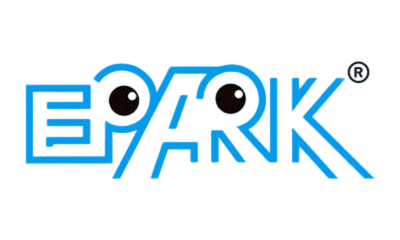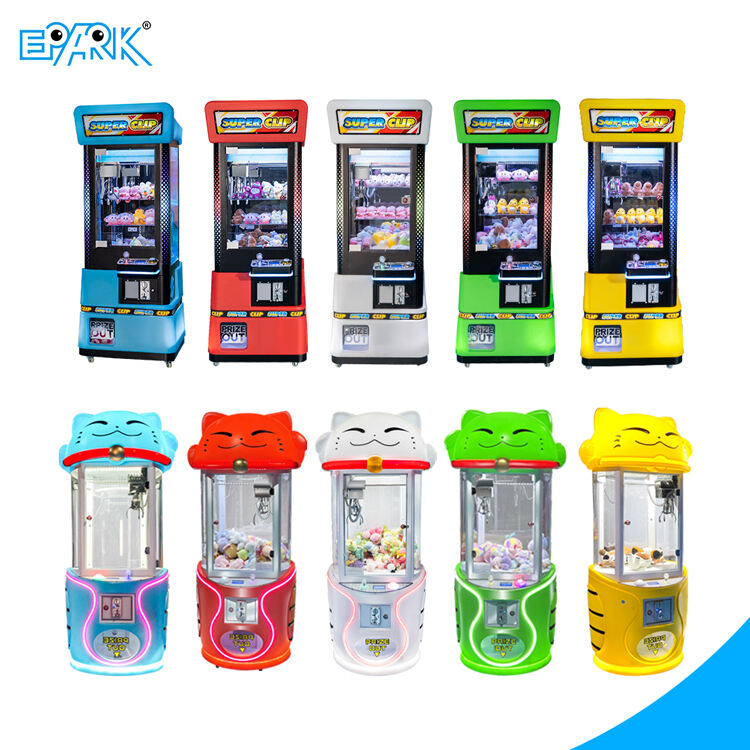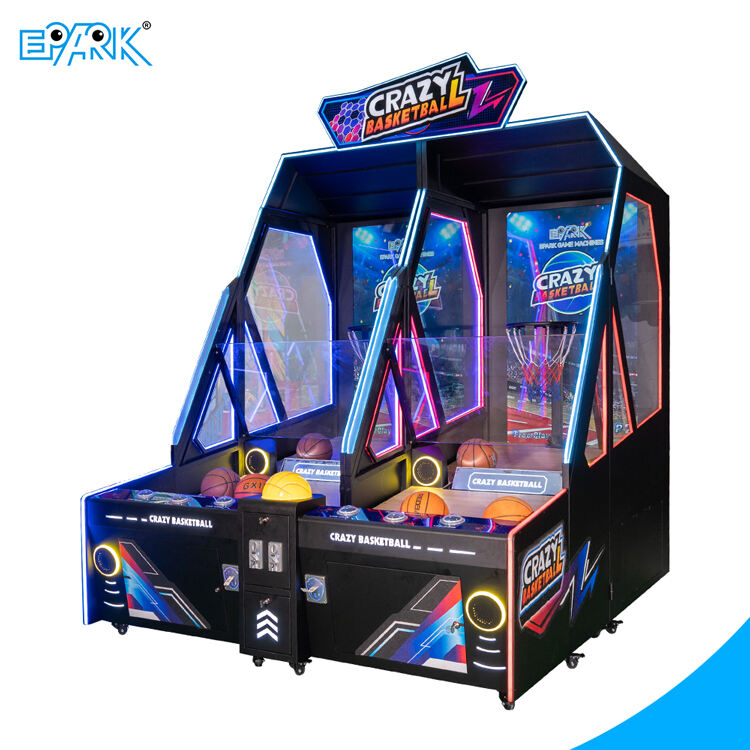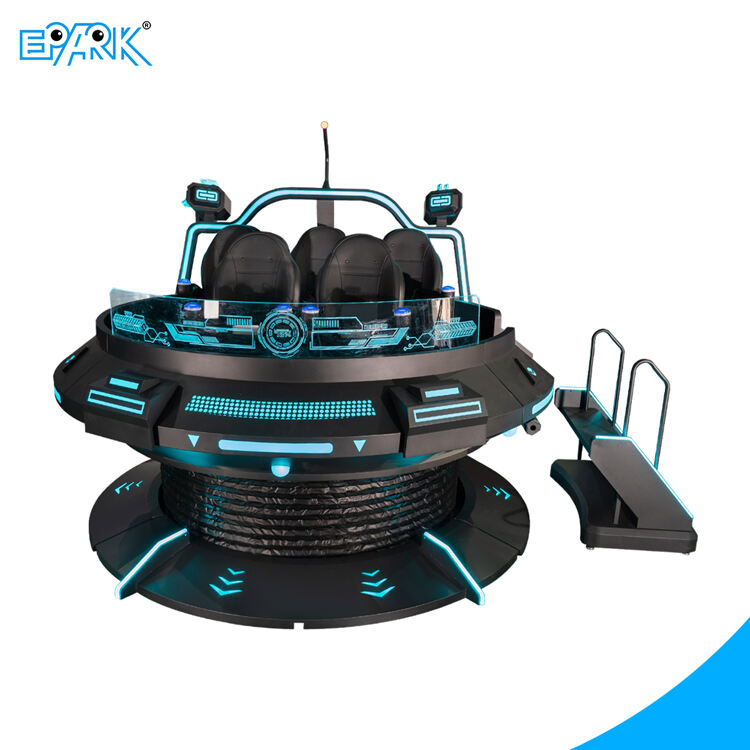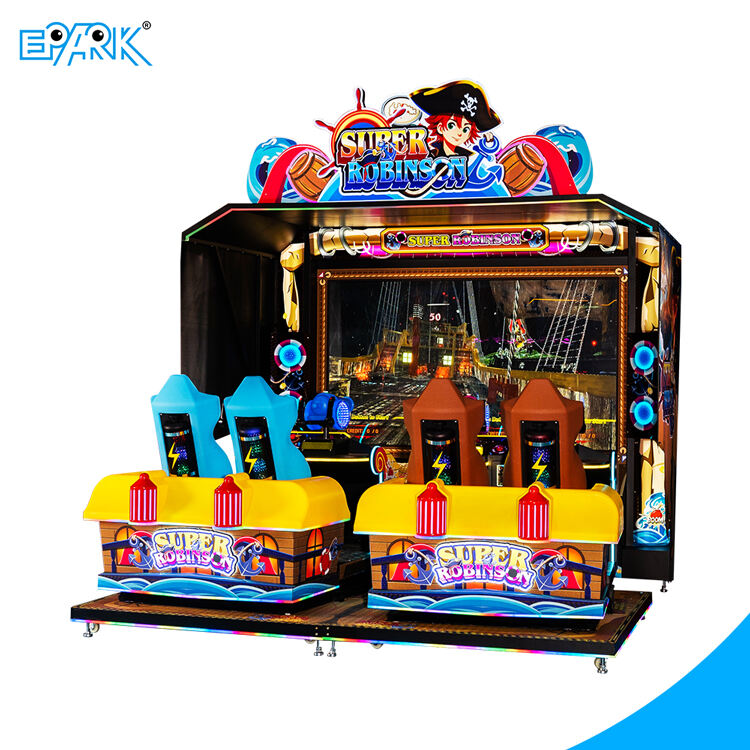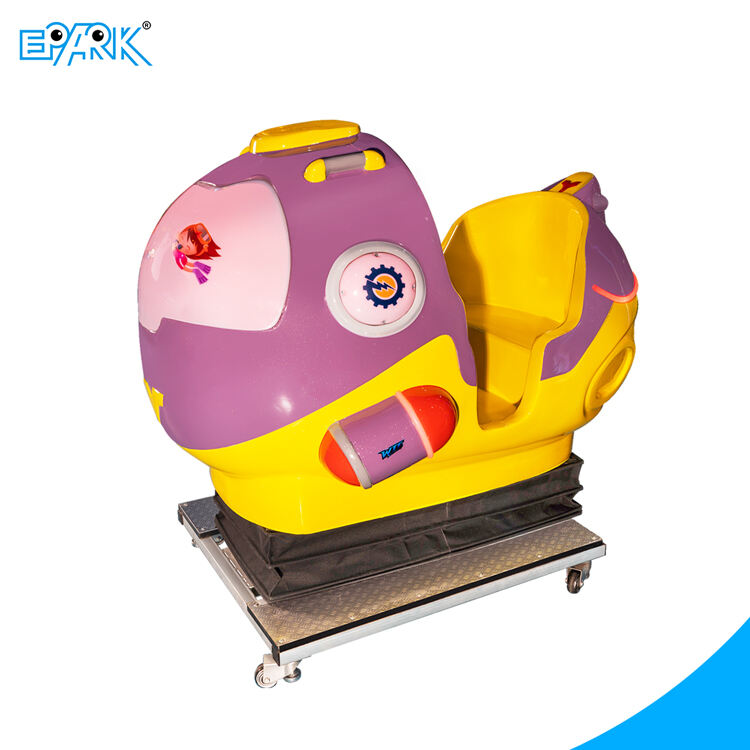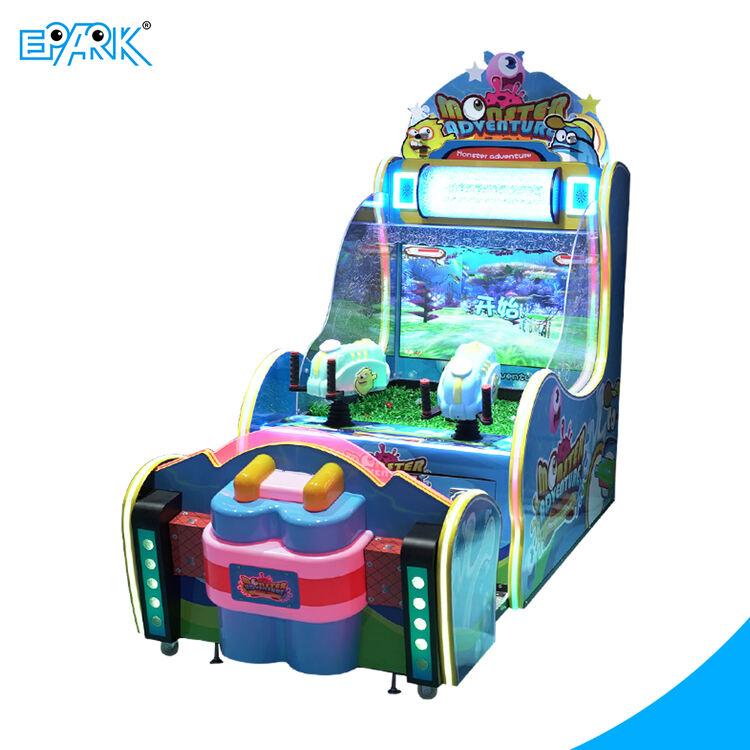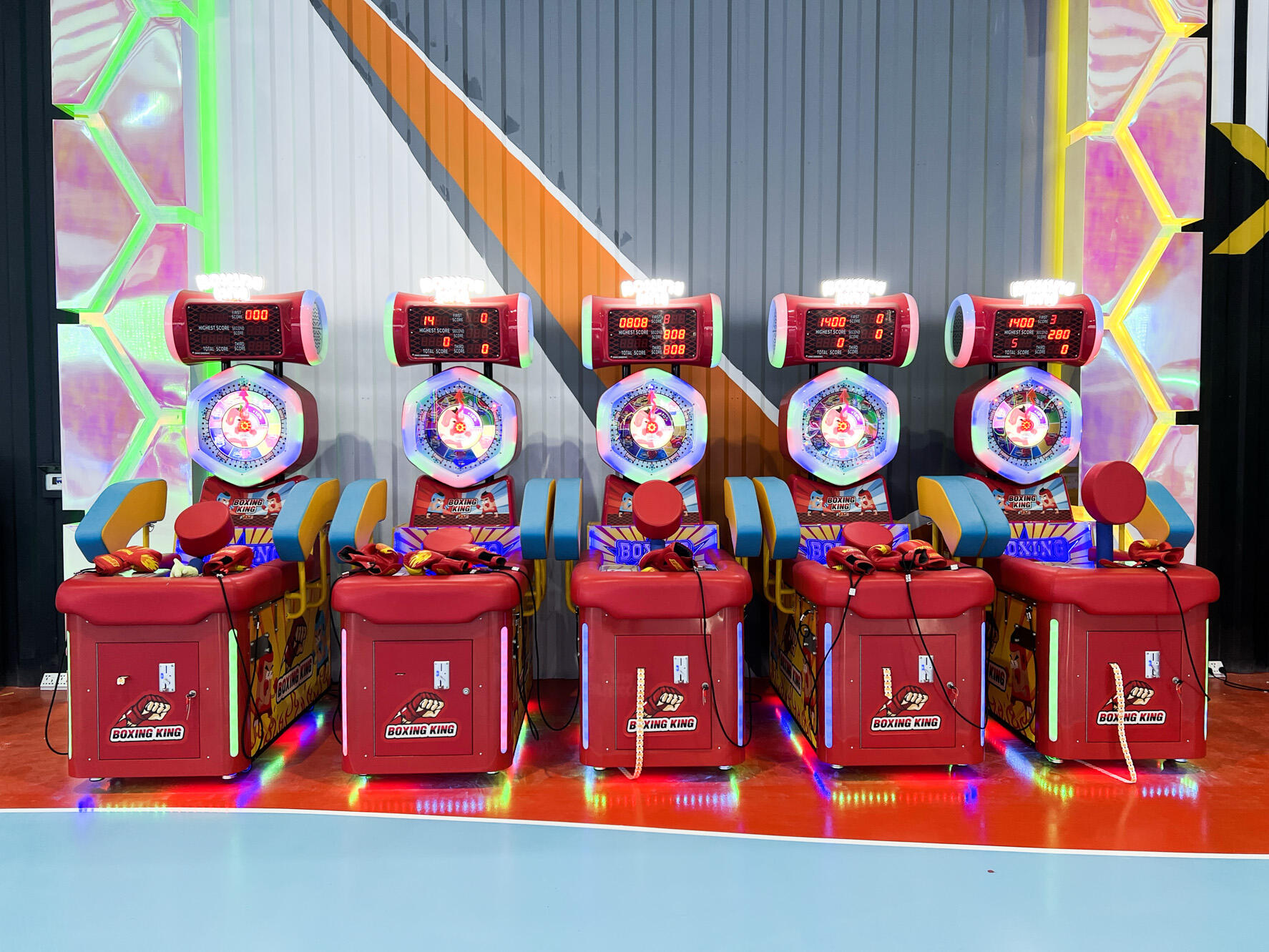Rivalitəli Hava Hokeyi Dinamiklərinin Anlayışı
Arcade-Üslubu Müsabiqənin Əsas Elementləri
Təbii ki, arakadlarda hava hokeyi insanların sürətli reaksiya verməyi bacarmaqlarından, qabaqcıl düşünmələrindən və komanda kimi birlikdə işləmələrindən asılıdır. Yaxşı reflekslər oyunçuların şaybanın stol üzərində hərəkət etdiyi istiqaməti izləməsinə, hətta qəribə sıçrayışları ilə də başa çıxmasına kömək edir. Ağıllı planlaşdırma rəqiblərin növbəti addımlarını proqnozlaşdırmağa və onları dayandırmaq üçün strategiyalar işləməyə kömək edir. Komandalar bir-birinə qarşı oynadıqda, qalib gəlmək üçün hər kəs yaxşı ünsiyyət qurmalı və oyun planına əməl etməlidir. Turnirlər son vaxtlar böyük ölçüdə inkişaf edib və bu böyük stolların ətrafında bir çox tamaşaçı toplana bilir. Tədbirlərdə daha çox insanın iştirakı oyun maşınlarının istehsalçılarının insanların əyləncəli vaxt keçirdiyi yerlərə yerləşdirilməsinə səbəb olur. Qaydaların da əhəmiyyəti böyükdür, çünki onlar heç kəsə qeyri-adi üstünlük vermədən ədalətli rəqabət aparmağı təmin edir, beləliklə hər kəs həqiqi bacarıqlarını nümayiş etdirə bilər və hər hansısa hərəkət və ya saxtakarlıqla heç nə pozulmur.
Rəqabətli Oyunın İnkişafını Sürdürən Bazar Trendləri
Havada xokkey stolları birdən hamıda görünür oldu və bunun üçün yaxşı səbəblər var. Bu oyunların bazarının ötən il təxminən 272 milyon dollardan 2031-ci ilə qədər təxminən 335 milyon dollara qədər artacağı, sənaye rəqəmlərinə əsasən illik təxminən 3% artacağı gözlənilir. Əslində maraqlı olan yalnız pul aspekti deyil. TikTok və YouTube kimi platformalar rəqabətli havada xokkeyi insanların əyləncə üçün izlədiyi şeyə çevirib. Təsirgücələr matçları canlı olaraq oynayırlar və milyonlarla insan izləyir, bu da əvvəllər kafelərin əsas oyunu olan havada xokkeyi indi əsas axın təsərrüfatına çevirib. Xüsusilə gənc nəsillər bu tendensiyaya daha çox bağlı görünür, çünki onlar pinball maşınları əvəzinə video oyunları ilə böyüyüblər. İstehsalçılar da oyun zamanı LED işıqlar, toxunmat ekranlar və hətta artırılmış həqiqi laylara fancy yeniləmələri ilə cavab verirlər. Nəticədə, ölkə boyu yerli arakadlarda və ya evlərin soyutma otaqlarında daha çox insanlar padellər tutur və oynayır.
Turnir üçünHazır Stollar üçün Əsas Xüsusiyyətlər
Yüksək sürətli Fənq Motoru Tələbləri
Hər bir yaxşı hava hokey stolunun ürəyi yüksək sürətli üfürən mühərrikindədir. Bu komponent olmadan oyunçular sevdikləri sürətli oyunları oynaya bilməzlər. Bu mühərriklər əsasən şaybanın stolun səthində hamar şəkildə sürünməsini təmin edir və hər bir vuruşu çubuqdan çox yaxşı hiss etdirir. Ciddi turnir stolları adi tədbiq üçün nəzərdə tutulmuş modellərdən daha güclü üfürənlərə ehtiyac duyur. Fərq çox önəmlidir, çünki daha güclü hava axını şaybanın daha sürətli hərəkəti və uzun oyunlarda hər saniyənin önəmli olduğu zaman daha yaxşı ardıcıl nəticələr verir.
Adi üfürmə motorları evdə sadəcə əylənmək üçün yaxşı işləyir, lakin hər saniyənin və dəqiqliyin əhəmiyyətli olduğu ciddi yarışlarda onlar real çətinlik çəkirlər. Ciddi turnir stolları uzun oyunlar ərzində qeyri-müəyyən müddətə işləmək üçün dayanıqlı motorlar tələb edir və yavaşlama və ya qızma qabiliyyəti olmamalıdır. İnsanlar turnir səviyyəli avadanlıqlara böyük pul xərclədikdə, onlar stolun tədbirlər boyu sürətli tempdə hərəkətə gəlməsini təmin etmək istəyirlər. Yarış sahəsinə çıxan hər kəs üçün həqiqi turnir atmosferi yaratmaqda yaxşı yüksək sürətli motorun fərqi böyükdür.
Professiya səviyyəli Səth Slipstandartları
Ciddi hava hokeyi matçlarında stolun səthinin nə qədər sürtkü olduğunu təyin edən əsas amildir. Oyunçular düzgün qaydada saxlanılan hamar səthə malik olduqda, şayba lövhə üzərində proqnozlaşdırıla bilən şəkildə sürüşür və rəqiblər arasında ədalətli rəqabət yaranır. Əsas məsələ isə sürtülməni azaltmaqdadır ki, bu da oyuna sürətli temp və həyəcan gətirir. Turnir təşkilatçıları adətən şəffaf şüşələnmiş ağac səthlər, polikarbonat örtüklər və ya laminatları üstün tuturlar, çünki bu materiallar şaybaya daha az müqavimət göstərir. Əksər təcrübəli oyunçular istənilən kəsə deyəcəklər ki, bu amili düzgün tətbiq etmək tərəvəzlik qurğularla yarış səviyyəsinə uyğun olanlar arasında fərq yaradır.
Səthlərin uzun müddət yaxşı vəziyyətdə saxlanması üçün düzgün texniki xidmət göstərmək çox vacibdir. Çoxları üçünn müntəzəm təmizləmə və bəzən səthin yenidən işlənilməsi kiçik çatlar və xəttlərin yaranmasının qarşısını almaqda kömək edir ki, bu da oyunun gedişatını tamamilə dəyişə bilər. Ciddi yarışlarda isə, harada ki, ədalətli oyun vacibdir, səthin eyni dərəcədə kələ-kötürlü saxlanması sadəcə vacib deyil, tamamilə zəruridir. Bütün oyunçular eyni şəraitdə olduqda, idmançılar həqiqətən də meydanda və ya kortda nələr edə biləcəyini nümayiş etdirmə şansı əldə edirlər.
Çətin müsabiqələr üçün Razılaşdırma Optimallaşdırılması
Turnir Oyunu üçün Fəzanın Konfiqurasiyası
Hava hokeyi turnirinin təşkili üçün meydançaların yerləşdirilməsi ilə bağlı fikirlər diqqətlə planlaşdırılmalıdır. Düzgün düzülüş oyunçuların təhlükəsizliyi və oyunun səlis axmasına kömək edir. Meydançalar arasındakı kifayət qədər məsafə oyunçular strategiyalara çox dalmış zaman baş verə biləcək təsadüfi toqquşmalardan qoruyur. Təşkilatçılar ən çox praktikada yaxşı nəticə göstərən beş fut (1,5 metr) boş sahə saxlamağı üstün tuturlar. Bu əlavə sahə oyunçuların rahat hərəkət etməsinə, eyni zamanda hesabı göstərən lövhələr və hakimlər üçün kifayət qədər yer saxlanmasına imkan verir. Turnir təcrübəli təşkilatçıları isə bu düzülüşün təsadüfi məsləhət deyil, həqiqi təcrübədən, məsələn, Dünya Hava Hokeyi Çempionatlarında alınan təcrübədən irəli gəldiyini bilirlər. Orada düzgün məsafə saxlamaqla hər kəsin oyunun özünə diqqət yetirməsini təmin etdiyini şahid olublar.
İllərim və Parket Nöqləri Haqqında
Yaxşı işıqlandırma, hava hokeyi oyunlarında doğru atmosferi yaratmaq və yüksək diqqəti saxlamaq üçün ən vacib amildir. Ən yaxşı konfiqurasiyalar şüşədən gələn irənc parıltını azaldır və bütün stol sahəsinə bərabər şəkildə işıq yayır. Bu gün çoxlu sayda insan LED işıqlandırmanı tərcih edir, çünki enerji qənaət edir və oyunun uzun saatları ərzində gözləri yormayan təbii işıq effekti yaradır. Əksər insanların unutduğu isə zəmin seçimindən daha vacib heç nə olmadığınadır. Rezin və ya vinil örtüklü zəminlər, xüsusən də oyunçular tam sürətlə hərəkət edərkən sürüşməni və düşməni qarşısını almaqda əla nəticə verir. Sağlam, sürüşməyə davamlı zəmin isə oyunçuların oyunun ortasında tarazlıqlarını itirməkdən narahat olmaqlarına imkan verir və bu, əslində oyunu əsaslı şəkildə narahatlıqdan əyləncəyə çevirən amildir.
Lig strukturlarının və rəylərin tətbiqi
Reytingli sistemləri yaradmaq
Hava hokeyi turnirleri üçün reytli sistem qurması strukturlaşdırılmış bir yanaşmadan ibarətdir. Başlamaq üçün burada əsas çərçivə verilmiştir:
- Turnir Məqsədlərini Təyin Edin : Əsas məqsədləri təyin edin, beynəlxalq səviyyədə bacarıqları yaxşılaşdırmaq, tanınma artırmaq və ya cəmiyyət dəstəyi təşviq etmək olaraq.
- Reytinq Kriterlərini Dizayn Edin : Açıq kriterlər qurun, məsələn alınan nöqtələr, qazandığınız müsabiqələr və ya texniki mükəmməllik oyunçuları effektiv şəkildə rəyli edilməsinə imkan verir.
- Oyunçu Sınıflandırması : Bacarıq səviyyələrinə, yaşlarına və ya əvvəlki performanslarına görə oyunçuları bölməklərə və ya kateqoriyalara ayırın.
- PLANLAMA : Hər bir oyunçu üçün adil şans və rekabət balansını təmin edən çapdan-çapa və ya silsiləvi format yaradın.
- Mükafat Sistemi : Ən yaxşı performans göstərənləri trofealarla, başlıqlarla və ya digər motivasiya elementləri ilə tanıtmaq üçün sistem yerinə yetirin.
Yaxşı reytinq sistemi oyunçuların ciddi şəkildə həvəslənməsinə kömək edir, çünki onlara nail olmaq üçün konkret bir məqsəd verir. Hər oyunun reytinqdə yuxarı və ya aşağı hərəkət etməyə səbəb olacağını bilən şəxslər daha çox səy göstərir. Biz bunun oyun masasında tamamilə fərqli bir atmosfer yaratdığını gördük; insanlar hətta reytinqdə irəliləmək üçün müntəzəm olaraq gəlməyə başlayır. Bunu peşəkar idman növləri ilə müqayisə edə bilərsiniz. Hava hokeyi də buz hokeyi kimi reytinq sistemi ilə idarə olunur. Liqaların reytinqi necə təşkil etməsi seyircilərin yenidən yenidən tribunaya qayıtmasına səbəb olur. Əksər yeni çubuqların və pukların bu gün internetdə satıldığını nəzərə alın. Reytinqdə irəliləməyə çalışan oyunçular üçün mütləq ki, pul qazanmaq mümkündür.
Rəqəmsal nöqtə cədvəli integrasiya strategiyaları
Rəqəmsal nöqtə cədvəl sistemi air hockey turnirində integrasiya edilməsi rekabətə görə təcrübəni çox böyük dərəcədə artırır. Real-vaxt yenilənmələri ilə və doğru izləmə ilə bu sistemi çoxsaylı faydalar təqdim edir:
- Sürətli geri bildiriş : Rəqəmsal nöqtə cədvəlləri oyunçuları və izləyiciləri oyunun bitməsindən əvvəl informasiyaya malik olmaqla sürətli performans nəticələrini təqdim edir.
- Effektivlik : Avtomatlaşdırılmış sistemlər insan xətasını azaltır və dəqiq hesablama və səhv olmayan işləməni təmin edir.
- Analitika : Dijital inteqrasiya oyunçuların performansının detallı analizini imkan verir, koçlar və təlim ştatı üçün oyuncunun güclü və zəif yanlarını göstərir.
Oyunlar zamanı hesabları effektiv saxlamaq üçün burada bir çox texniki vasitələr var. Telefonlarla və planşetlərlə işləyən vasitələr seçilir, çünki tədbirləri keçirənlərdən tutmuş qeydləri tez yoxlamaq istəyən oyunçulara qədər bütün maraqlı tərəflər üçün işi xeyli asanlaşdırır. Bunu zamanla müxtəlif növ idmanlarda müşahidə etmişik, dükan yeni materiallarla və təhlükəsizlik vasitələrinin yaxşılaşması ilə buz hökkeyi ləvazimatlarının xeyli yaxşılaşdığı kimi. Turnir təşkilatçıları bu cür rəqəmsal hesablama həllərini qəbul etdikdə, hava hökkeyi də görünən şəkildə artıq diqqət çəkir. Tamaşaçılar isə bu müasir sistemlər vasitəsilə matçların real vaxtda inkişaf etdiyini izləyərkən daha yaxşı təcrübə yaşayırlar.
Şampionlar üçün Yenilikçi Təlim Texnikaları
Dəqiq Qarışıq Təlimləri
Hava hokeyində yüksək səviyyədə mübarizə aparmaq istəyən şəxslər üçün dəqiqliklə istiqamətləndirilən rəqabətli oyunlar çox vacibdir. Bu, oyunçuların pukkun növbəti istiqamətini təxmin etməsi və rəqiblərinin hərəkətlərinə sürətli cavab verməsi bacarıqlarını inkişaf etdirir. Oyunçular dəqiqliyə nail olmaq üçün təlimatlarla məşq edərkən görüşlərdə müdafiə və hücum taktikasını da yaxşılayırlar. Məşhur bir məşq nümunəsi: məşqçilər pukkun istiqamətinin aniden dəyişdiyi vəziyyətləri təşkil edir, bu da oyunçuların əl-göz koordinasiyasını və sürətli bədən mövqeyini dəqiqləşdirmək bacarıqlarını artırır. Başqa bir effektiv üsulda oyunçular rəqiblərinin hər bir zərbəsini təqlid edərək onların gələcək hərəkətlərini proqnozlaşdırmağı öyrənirlər. Bu üsullarla sistemli şəkildə məşq etmək, xüsusilə də ənənəvi üsulları yaxşı bilən bacarıqlı rəqiblərlə qarşılaşmalarda rəqabət üstünlüyü yaradır.
Bank Atışı İdarəetmə Usulları
Bank vurğu hava hokeyi turnirlərində qalib gəlmək istəyən hər kəs üçün ən vacib bacarıqlardan biridir. Təbiən, bu, stolun yan tərəflərindən disk vuraraq, düşündükləri taktikaya malik olan rəqibləri keçmək fikri ətrafında dövrələnir. Çoxlu oyunçular müxtəlif bucaqlardan vurğularını metall divarlara dəyən disk yollarını daha yaxşı nəzarət etmək üçün saatlarla təkrar edirlər. Bucaq və sürətin necə işlədiyini anlayan oyunçular müdafiəçiləri çətin vəziyyətə düşürən, gözlənilməyən istiqamətlərdən disk qaytaran hərəkətlər etməyə başlayır. Yaxşı bank vurğu texnikası yalnız daha çox qol vurulması demək deyil, həm də rəqib komandanın müdafiə taktikasını pozur. Buna görə də ən yaxşı oyunçular məşq seanslarında digər hərəkətlərə keçməzdən əvvəl əvvəlcə bank vurğuları üzərində işləyirlər.
---
Ətraflı araşdırma və mürəkkəb texnikalara keçid, oyunçuların performanslarını tez-tez mükəmməlləşdirməyə imkan verir. Dəqiqlik və strateji üzərində işləyərkən, hava xokkeyi tutkuşları hər hansı müsabiqə şərtlərində ən yaxşı rəqabətçilər arasında qalmalarını təmin edə bilirlər.
